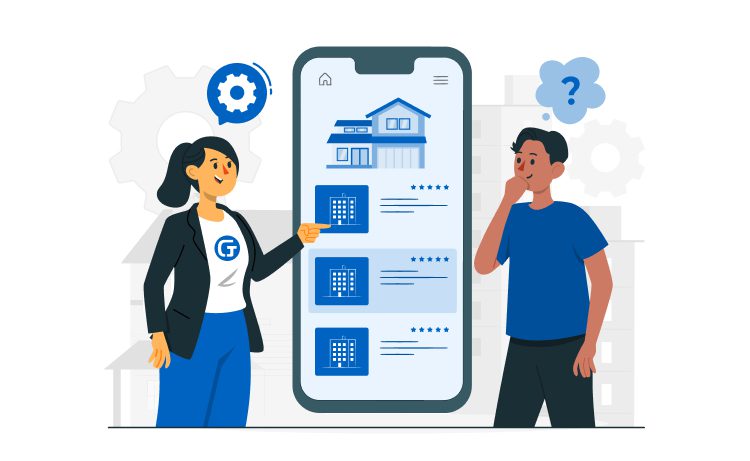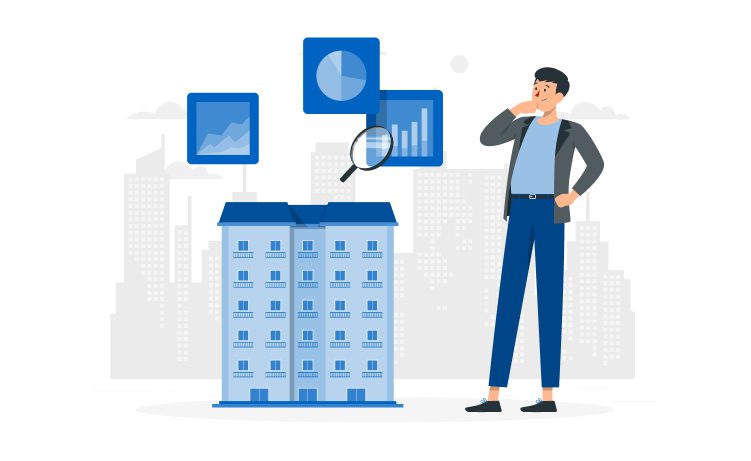
3 Key Uses of Big Data for Commercial Real Estate



Commercial real estate is closely related to data analytics. However, realtors and agents used to make decisions based on their knowledge and experience, as well as historical trends. But modern specialists have a unique opportunity to automatically process data and receive analysis results in real-time. It is of great importance not only for realtors but also for developers and investors. In this article, we will understand what role big data plays in this industry and look at three relevant ways to use it.
Content

Access to complex and large datasets has changed the rules of the game in many areas. For example, in healthcare, it has become the basis for the introduction of computerized diagnostics, automated reporting, and other innovations. Insurance companies use data to assess the health of potential insurers, while online retailers personalize the customer experience.
This trend has not bypassed real estate. The use of big data technologies in this industry has begun relatively recently. But many experts have already managed to evaluate their benefits for business. Now you do not need to spend time manually searching for information in many sources, maintaining paper records, and lengthy analysis. This applies to everyone: developers, investors, realtors, lenders, etc.
The role of big data in real estate for:
Such technologies are designed to enable businesses to gain valuable information for decision-making. It can be statistics (financial, demographic), building design documentation, social networks, industry news… As known, the lion’s share of information comes from devices connected to the IoT. These technologies are inseparable: IoT collects data from physical objects, and big data processes it quickly.
Please note that modern platforms display data on convenient dashboards, automatically generate reports, and integrate with other property management tools. It is a crucial source of up-to-date information and practical knowledge for those who can properly manage it. Let’s take a look at a few ways you can use them to get maximum benefit.

Pricing directly affects the success of real estate in the market. Usually, the owner (developer, landlord) conducts a comparative analysis of objects, considering such factors as infrastructure, transport interchange, proximity to the metro, etc. However, this may not be enough to form a price and attract the attention of buyers.
To be successful, you need to know exactly what price is acceptable to the target audience. Big data provides access to up-to-date data on the population (employment, demographic changes), the dynamics of demand, supply, and sales in specific segments. This allows to predict consumer behavior and determine the optimal price range for them.
Also, thanks to big data, it is possible to analyze average market indicators for any segment (region, type of object) around the world. The information comes from many sources, which gives a clear picture of the situation. Thus, appraisers can predict prices in the long term per square meter. According to McKinsey, such forecasts are 90% accurate.
Access to reliable and up-to-date market indicators benefits both property owners and those who want to buy it. An investor can learn everything about an object using large databases, e.g. CoreLogic platform, which collects information from public sources, clients, and aggregators.
The investor needs to be aware of the property’s key characteristics and everything connected to it. It may include the facility’s technical condition, the potential cost of maintaining the premises, and the risks of an operation. For investment, the area’s features also play a significant role: transport interchange, crime rate, proximity to the center, and even the average income of the population.
Based on such analytics, it is easier for an investor to identify financial risks and determine how profitable it is to invest in a particular property. Knowing the key details of the facility and location, it is possible to calculate profitability in the short and long term. As a rule, the profit of such real estate is 6-12% per year.
The use of big data in real estate allows us to correctly plan the construction. How? Thanks to 3D models that are developed based on key data about the object and its location. Creating a digital model helps to understand the look of the building and its fit into the infrastructure.
Big data is becoming a powerful source of information for building high-quality visual models of buildings of various types. You can plan a rational space in commercial premises and think through communications on their basis. As a result, the developer will be sure whether it will be able to implement the idea timely.
Big data models also allow determining the cost of an investor to maintain a facility, e.g. how much electricity and water a building will consume. If the investor compares these costs with the potential income (e.g. from renting out premises), they will be able to understand the reasonability of construction.
At a time when big data was not so widespread, real estate, investors, and developers relied only on their knowledge. Now they have a powerful source of up-to-date information about everything related to buying, selling, renting, and other real estate transactions.
Contact us and get a qualified consultation on real estate software development.
It is structured and unstructured information that comes from different sources at high speed and in huge volumes. It is presented in “raw” form and requires processing.
With this data, you can quickly and easily estimate the buildings’ cost, predict the return on investment, and even model the space of objects that have not yet been built.
Access to data helps to make decisions about investing money (for investors), building (for developers), creating personal offers (for realtors), and issuing a loan (for credit underwriters).








